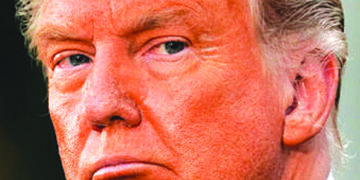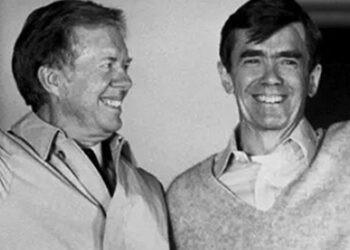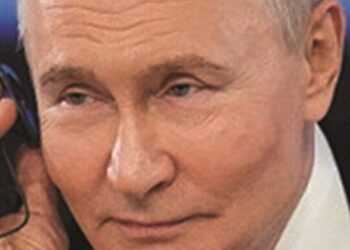The Islamic Republic’s foreign minister acknowledged Saturday that it does indeed have a manufacturing plant in Karaj to make centrifuge components, but said that there is nothing secret about it.
However, at the same time the foreign minister was acknowledging the plant, the provincial governor-general for Alborz, which includes Karaj, was denying that the plant cited by the Mojahedin-e Khalq had anything whatsoever to do with making centrifuges.
The Mojahedin-e Khalq made quite a name for themselves in 2002 when they called a news conference and revealed the secret uranium enrichment site then under construction at Natanz. That caused quite a stir because Iran had never told the International Atomic Energy Agency (IAEA) that Natanz was under construction, although Iran was required to do so before it began construction.
The site for making centrifuges is a different matter. The IAEA told the Iran Times, “Centrifuge manufacturing is not an IAEA safeguarded activity in any country.” In other words, Iran is not required to tell the IAEA where it makes centrifuges.
But IAEA officials have said in the past that Iran had declined to tell them where the centrifuges were made, so the claim Saturday by Foreign Minister Ali-Akbar Salehi that the Karaj plant was not a secret was short of the truth.
CNN quoted an unnamed US official as telling CNN the United States was already aware of the plant.
Salehi said, “The factory mentioned by the Monafeqin [hypocrites, the term used by the Islamic Republic for the Mojahedin-e Khalq] is not a new discovery. We make components there. But it is in no way a secret.” Salehi said there are “many factories across the country that make equipment needed by the Bushehr power plant and the Atomic Energy Organization of Iran.”
But that same day, Issa Farhadi, governor general of Alborz province, Iran’s newest province, told the state news agency the Mojahedin were all wrong.
Farhadi said the TABA company named by the Mojahedin makes electric meters and switches at a plant just outside Karaj.
“This private company does not have any production line beyond its main activity,” he said. “No industrial units in Alborz province—and particularly in the city of Karaj—are active in the production of nuclear components. The Western media spread such false reports in order to distract world public opinion.”
He was not asked and did not say why the foreign minister of Iran spreads such false reports.
At the Thursday news conference of the Mojahedin-e Khalq in Washington, the group named two sites—the one near Karaj named TABA, the Persian initials for Iranian Cutting Tools Factory, and another near Qazvin named Shafizadeh. Alireza Jafarzadeh, who has hosted many such Mojahedin news conferences, said both plants are managed by the Defense Ministry, a fact that should serve as a “red flag” for those wondering whether Iran has a military nuclear program.
Jafarzadeh said Iran had made 100,000 centrifuges to date, far more than needed by the centrifuge operating sites Iran has admitted to having. The site at Natanz has a hall designed for 54,000 centrifuges, while the small site buried in a mountain at Fordo near Qom is designed for 3,000 centrifuges.
However, Iran has announced plans for 20 more enrichment sites on the scale of Natanz to enrich fuel for about 20 nuclear power plants. Iran’s stated goal is to generate 20,000 megawatts by nuclear power, so it will theoretically need more than a million centrifuges.
David Albright, who heads the Washington-based Institute for Science and International Security (ISIS), said he did not personally know about the TABA plant, but did not believe the claim about Iran having made 100,000 centrifuges.
“There is no way Iran has made components for 100,000 centrifuges,” he told CNN. “It runs contrary to all indications that Iran has a shortage of raw materials.” He estimated that Iran has only made 12,000 to 15,000 centrifuges. Iran currently has almost 9,000 installed at Natanz, with at least 1,000 removed after they failed at Natanz. The total number at Natanz has been steady for about three years. There are no centrifuges yet at Fordo.
At the Mojahedin news conference, Jafarzadeh provided some colorful details about the operations of the two sites he named, presumably from Mojahedin agents working there. He said employees traveling between the two sites with production documents have their briefcases handcuffed to them so they cannot lose the documents. All telephone calls at the two plants are monitored, he said, while personal computers and other electronic devices are not permitted to be brought inside.
Meanwhile, President Ahmadi-nejad and Fereydun Abbasi, the new head of the Atomic Energy Organization of Iran, unveiled what they said were the second and third generations of centrifuges to be made by Iran. Iran announced years ago that it was working on more advance centrifuges that would operate much faster to produce more enriched uranium.
The men did not say, however, whether these more advanced centrifuges would now be installed at Natanz and whether installation of the original version would now be halted.















